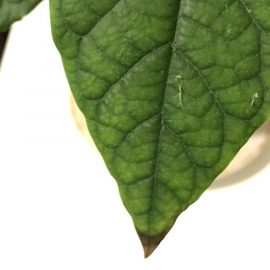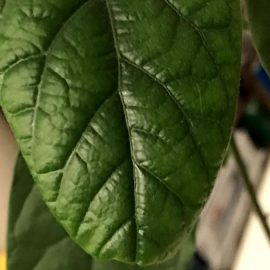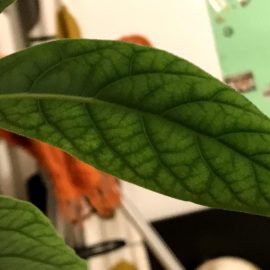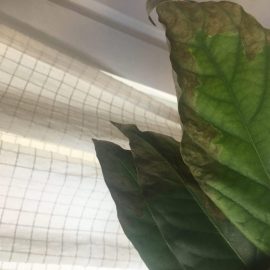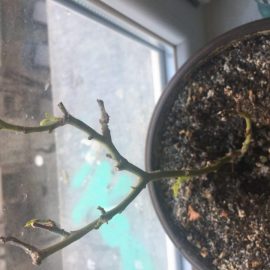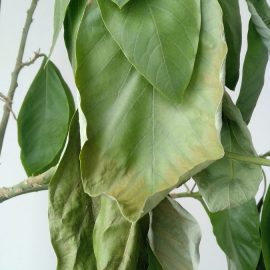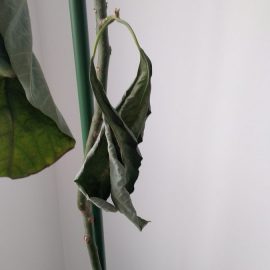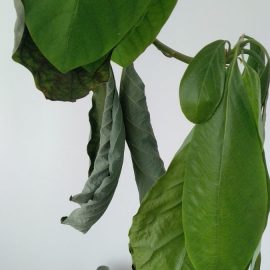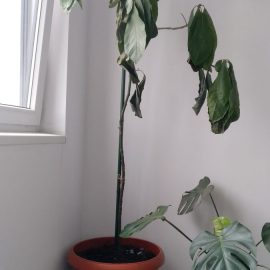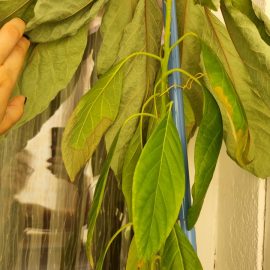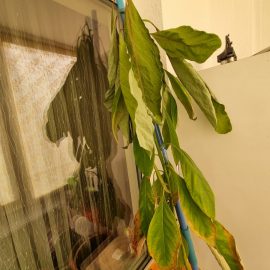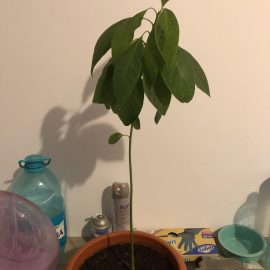Avocado, plant care and growing guide
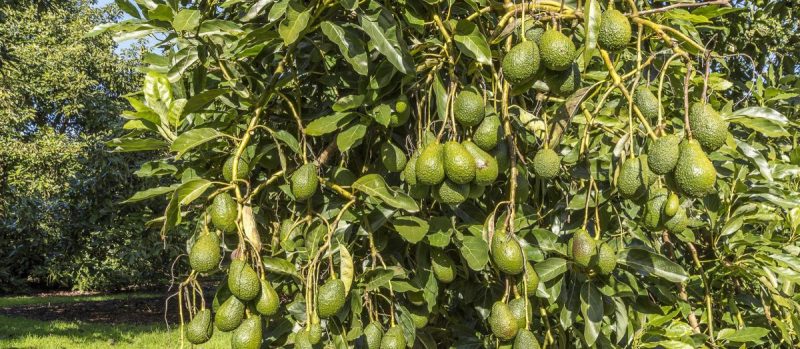
Avocado, Persea americana, is a shrub native to Central and Southern Mexico. It is part of the Lauraceae family, and in its natural environment, it grows as a 20 m tree, with persistent foliage. It has an alternate leaf arrangement, the leaves being 20 cm long. It does not bloom in pots.
In its natural environment, its inflorescences form a panicle, with small, greenish-white flowers, protected by bracts. The fruit, from a botanical point of view, is a berry that contains a single seed. The avocado tree is a widely spread tree in the tropical climate and the Mediterranean area. It is sometimes used as an indoor decorative plant in pots. In apartments, it lasts up to 10 years and it can grow to be 1-2 m high.
Species and cultivars
The Persea americana species has several cultivars, divided into two groups:
- Cultivars A: ‘Hass’, ‘Lula’, ‘Croquette’, ‘Maluma’.
- Cultivars B: ‘Fuerte’, ‘Bacon’, ‘Cleopatra’, ‘Brogden’.
The specimens obtained from the seed do not faithfully reproduce the characteristics of the variety.





Environmental conditions
Light. Avocado prefers bright places, with direct sunlight, except during the warm season.
Temperature. Being a plant native to tropical and subtropical areas, the avocado needs an optimal temperature of 18-22° C.
Humidity. It is recommended to spray the foliage regularly with water, but the plant can also withstand dry air when it is placed in a cooler room.
Substrate. It grows best in a substrate that is specific to green plants.
Recommended products
-
You can find products on a different store
Change Store -
You can find products on a different store
Change Store -
You can find products on a different store
Change Store -
You can find products on a different store
Change Store -
You can find products on a different store
Change Store -
You can find products on a different store
Change Store -
You can find products on a different store
Change Store -
You can find products on a different store
Change Store -
You can find products on a different store
Change Store -
You can find products on a different store
Change Store -
You can find products on a different store
Change Store -
You can find products on a different store
Change Store -
You can find products on a different store
Change Store -
You can find products on a different store
Change Store -
You can find products on a different store
Change Store -
You can find products on a different store
Change Store -
You can find products on a different store
Change Store -
You can find products on a different store
Change Store -
You can find products on a different store
Change Store -
You can find products on a different store
Change Store -
You can find products on a different store
Change Store -
You can find products on a different store
Change Store -
You can find products on a different store
Change Store -
You can find products on a different store
Change Store
Watering
Watering should be done moderately. The substrate should be allowed to dry on the surface before you water the plant again.
Fertilization
During the vegetative growth period (April-October), a fertilizer for green plants should be applied.
Recommended products
-
You can find products on a different store
Change Store -
You can find products on a different store
Change Store -
You can find products on a different store
Change Store -
You can find products on a different store
Change Store -
You can find products on a different store
Change Store -
You can find products on a different store
Change Store -
You can find products on a different store
Change Store -
You can find products on a different store
Change Store -
You can find products on a different store
Change Store -
You can find products on a different store
Change Store -
You can find products on a different store
Change Store -
You can find products on a different store
Change Store -
You can find products on a different store
Change Store -
You can find products on a different store
Change Store -
You can find products on a different store
Change Store -
You can find products on a different store
Change Store -
You can find products on a different store
Change Store -
You can find products on a different store
Change Store -
You can find products on a different store
Change Store -
You can find products on a different store
Change Store -
You can find products on a different store
Change Store -
You can find products on a different store
Change Store -
You can find products on a different store
Change Store -
You can find products on a different store
Change Store
Repotting
The Avocado plant requires to be transplanted repeatedly in the beginning (when the plant is young), when it has two leaves and when the stem reaches 30 cm. After that, transplanting is done every 2 years, in spring (March).
Pruning
Young shoots, obtained from the seed, must be cut at the top to form a branched, aesthetic aspect of the plant.
Diseases and pests
Sometimes, in conditions of low temperature, mildew can occur. The pests that can infest Avocado plants are woolly apple aphids and mites.
Recommended products
-
You can find products on a different store
Change Store -
You can find products on a different store
Change Store -
You can find products on a different store
Change Store -
You can find products on a different store
Change Store -
You can find products on a different store
Change Store -
You can find products on a different store
Change Store -
You can find products on a different store
Change Store -
You can find products on a different store
Change Store -
You can find products on a different store
Change Store -
You can find products on a different store
Change Store -
You can find products on a different store
Change Store -
You can find products on a different store
Change Store -
You can find products on a different store
Change Store -
You can find products on a different store
Change Store -
You can find products on a different store
Change Store -
You can find products on a different store
Change Store -
You can find products on a different store
Change Store -
You can find products on a different store
Change Store -
You can find products on a different store
Change Store -
You can find products on a different store
Change Store -
You can find products on a different store
Change Store -
You can find products on a different store
Change Store -
You can find products on a different store
Change Store -
You can find products on a different store
Change Store
Propagation
The Avocado plant can be propagated through seed. It is germinated in a glass of water. It should then be fixed with sticks to the edge of the glass and the base placed in water. After the root is formed, it can be moved in a pot.
It is sometimes used as an indoor decorative plant in pots.
In addition:
- if the young shoots are not cut in time, the plant will have an elongated and naked appearance.














































































































































































































































































































































































































































